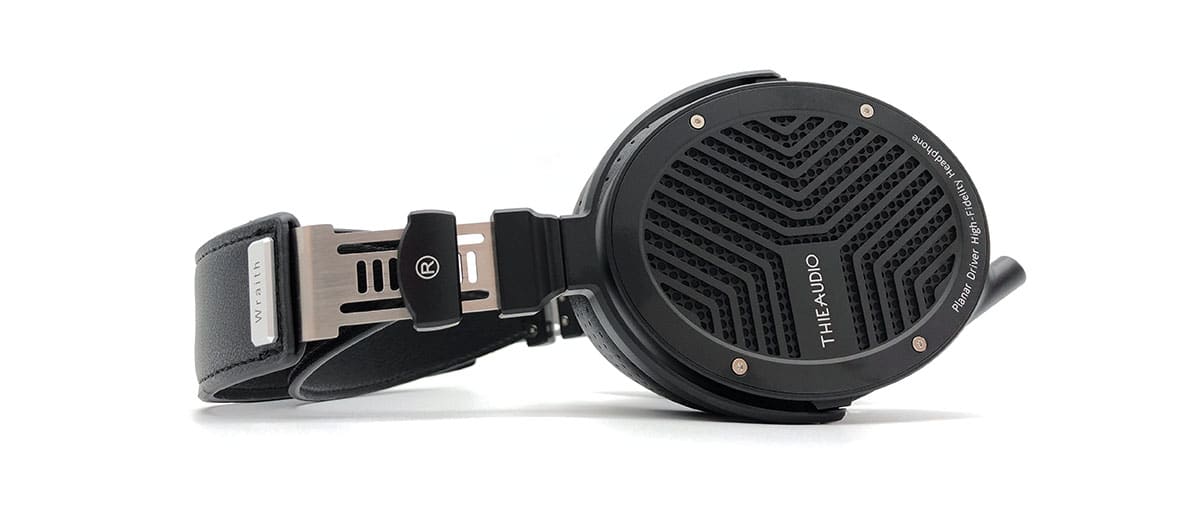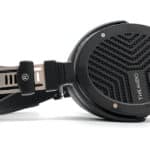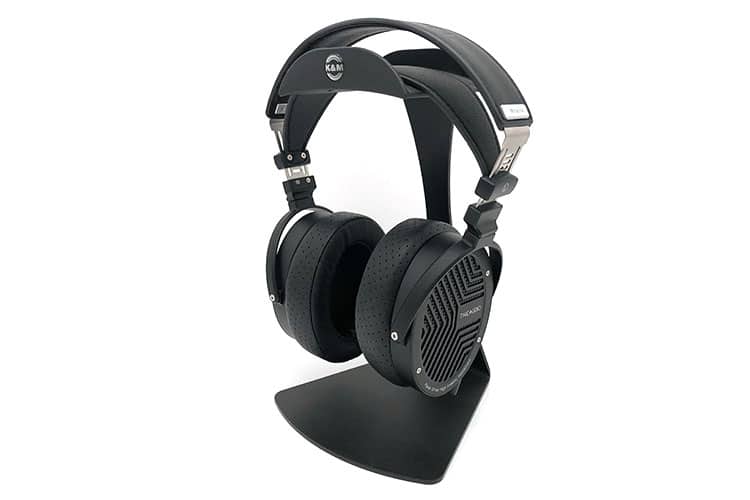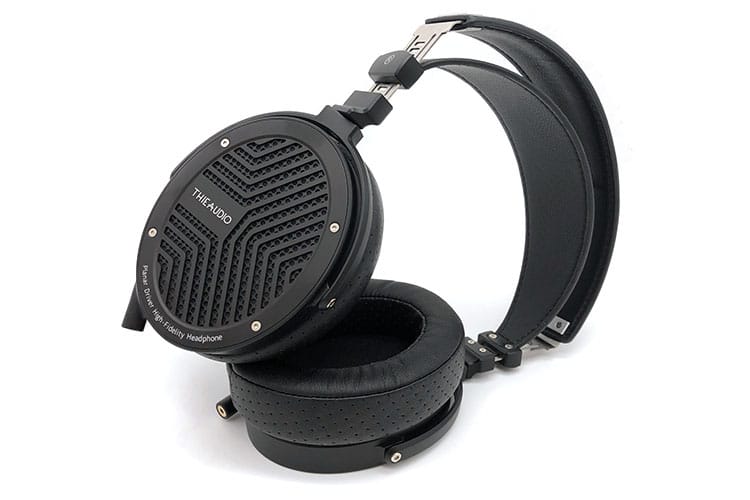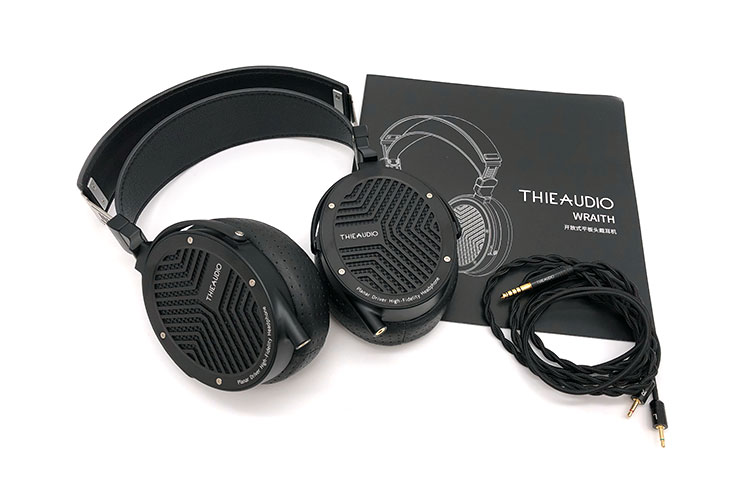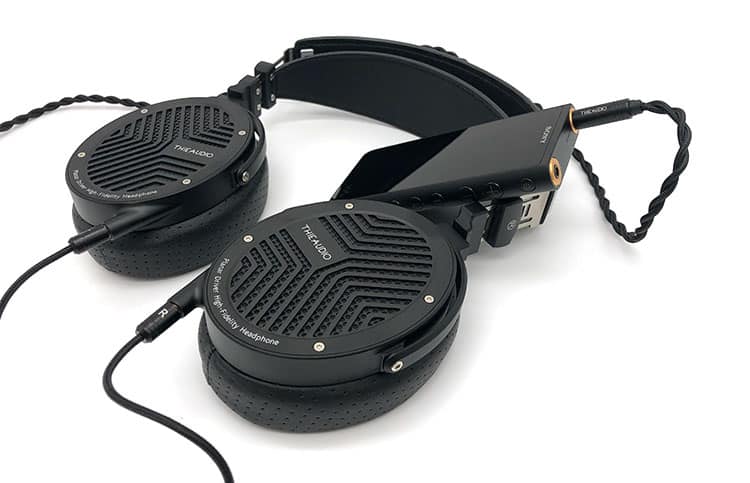Today, we review the Thieaudio Wraith which is the company’s flagship circumaural open-back headphone featuring a 97mm planar magnetic driver. It is priced at $549.
Disclaimer: This is a sample in exchange for our honest opinion. Headfonics is an independent website that does not have any affiliate links or status. We thank Linsoul for this opportunity.
To read more about Thieaudio products we have previously covered on Headfonics please click here.
Note, that this article follows our latest scoring guidelines which you can read up on here.
Offering mostly portable solutions to users, the long list of IEMs under Thieaudio’s belt such as the Legacy 5 would make you think they have zero talent for full-size headphones. But believe it or not, their first foray to the fold was a planar magnetic headphone called the Phantom 3 years ago.
So, while there hasn’t been any new headphone release in the lineup of Thieaudio in the past three years, the Phantom is a physical reminder of its roots. The new Wraith is in essence a chance to build on its older sibling using more modern technology.
Tech Highlights
The Thieaudio Wraith is a full-sized open-back planar magnetic headphone pitched to the ‘mid-fi’ Headfi audio enthusiast. Shrinking down from the 101mm planar driver found in the Phantom, the Wraith uses a new 97mm planar driver assembly with 23Ω resistance and a 101dB sensitivity level.
The new German conductor membrane is compressed thinner for a more even surface tension and the magnets used are 1.5 times stronger as well.
Getting the pinna compensation right is a huge task even for big audio names. Without giving away my sound impressions on the Wraith just yet I’d like to point out that Thieaudio claims to have tuned the drivers perfectly for a clear and natural-sounding profile, especially around 1-3kHz.
Design
Precise and solid feeling are the two words that came to mind when I first saw and held the Wraith. Not the most striking headphone out there, it embodies its name by having an industrial yet ghost-like aura that remains out of the way.
Machined and hand-assembled, the joints and pivots give a sense of reliability even when abused. The firm fit of the swivel holds the cups in their position once let go making minute adjustments possible if necessary.
Checking with the Phantom, the cups of the Wraith are now oval and made of steel instead of walnut wood. What’s similar between the two is the face with four screws that will surely remind you of each other albeit the Wraith looks more contemporary.
The leather pads that came with the Wraith are perforated on the inside and outside walls. Pad rolling is not just possible but is also fast with the Velcro-lined cup that interlocks with the rear side of the earpad.
Holding everything together is the new suspension-style headband which is a very different implementation from the Phantom. The adjustment mechanism bites with confidence and will not move accidentally.
Comfort
I thought the Wraith was pretty heavy when I picked it up from the box, but just like any well-designed system, the suspension headband soaked up the weight and my worries quickly disappeared.
Stitched but not padded, at least the length of the leather is generous for wide heads like me making sure there is no extra clamp pressure aside from what’s provided by the spring steel.
For my first impressions, I wore the Wraith for three hours with no major concerns regarding comfort to point out. And while the pads may seem dimensionally limited due to their shape, I’m glad to confirm they’re deep and wide enough for my average-sized ear.
The only thing I noticed is a minimal sway or shift that happens when I look in either direction since the momentum swings the weighty drivers. However, since the removable 2.5mm sockets are angled, the cables are kept out of the way when doing minor head movements.
Stock Cable
My immediate feedback upon seeing the provided cable is concerning the two 2.5mm jacks for connecting to the headphones. It may be a minor gripe and I know brands like Hifiman did 2.5mm jacks before but I would have liked to see 3.5mm, mini-XLR, or Hirose jacks instead for longevity’s sake.
I actually would have minded less the fitted jacks if the sockets on the Wraith were recessed or not as protruding. Those who are like me who accidentally tug the cable in awkward directions often will know the importance of a secure linkage.
Moving on with the looks, the 1.25m OFC coaxial shielded cable finished in black paracord sleeving has an understated two-core twisting pattern. Completely black aside from the white texts and gold jacks, the provided cable continues the simplicity seen in the cups and features of the Wraith.
Packaging & Accessories
Throwing in a layer of anticipation, Thieaudio further enclosed the Wraith’s main product packaging in a brown pizza-style cardboard box. Even without any padding whatsoever, it still helps to make sure its contents arrive in pristine condition.
For the unboxing proper, opening the two-piece black box first shows an 8-leaf booklet-style user manual translated into Chinese, Japanese, and English. Those who like to read their paperwork will appreciate their newly bought headphones more with the cool graphics and writeups about the Wraith.
Putting attention back to the rest of the contents, aside from the Wraith tilting upwards its face, I appreciate the silver plate etched with the product name and serial number stuck right in the middle.
Having not yet found the cable, I quickly realized that a cardboard pocket can be removed just above the nameplate which contains the 4.4mm balanced cable.
Sound Impressions
Summary
I have to admit that the Wraith felt special when I listened to it for a short taste before running it for burn-in. Having a variety of headphones that typically engaged, I found the Wraith to be an easy-going set of cans.
However, when I remembered that the target of the Wraith should be for monitoring, its sometimes heavy and thick sound prompted me to dig a little bit with some listening.
Its lows pack quite a bit of mass for a reference gear that also rolls off relatively fast. But since linearity could be a subjective thing, Thieaudio could either have based the Wraith on a different reference or simply thought an extra bump on the bass wouldn’t hurt especially for casual listeners.
The midrange shows itself readily but transitions upwards from the upper midrange to the lower treble with recessed energy. This trait is probably what brought me to the conclusion I had with my initial impression.
Timbre
As alluded to above, the timbre of the bass treads the line between being more substantial and warmer than accurate. The brawn of kicks is easily heard with a fast punch that on a continuous pace will slightly overwhelm the midrange.
Immense beats move away from transparency while pulling you in with their smooth and springy profile. With a dynamic low-end rumble, improvement in delineation is observed but the bite is still generally on the softer side.
With the songs that I listened to, the vocals of the Wraith felt syrupy and non-irritating but missed the impact and rawness I expect when a brighter song comes along. In effect, it presents the upper midrange in a lenient manner that doesn’t feel hurried or forced.
Areas of shakiness and definition around the edges for both vocals and instruments are well presented if only lacking a bit of extension. Steely twangs of guitars exist if not smoothed a little and delivered with a sweeter and softer tonality.
Cymbals splash with a metallic clang and exciting rings easily get noticed. And yet, the treble of the Wraith is generally held back with some signs of artificiality and bluntness on certain occasions.
Energetic rock songs with a lot of intertwined instruments playing and loud electric guitar riffs come up as compact and contained. The level of excitement is more or less just enough for it to not get left out.
Staging
The Wraith is on the honest and intimate side of the spectrum. More often than not, the objects never leave the lateral distance between the headphone drivers which brings you closer to the mix.
Presence-wise it is the treble region that gets pushed back the most extending the reach of instruments further. On slower synth notes, a surrounding authority enhances the soundscape’s grandness.
Even with its limited staging capability, the Wraith is making great use of its drivers as it images fairly well. It is only with busy songs that the recessed upper tuning profile of the Wraith doesn’t allow the full capability of the drivers to peek through.
Synergy
Efficiency
Having a 101dB efficiency may suggest otherwise, but the planar driver of the Wraith loves power whenever available. Still, those who are looking to run it in a portable scenario shouldn’t be at a loss since a good enough source will be more than sufficient.
With the Topping DX5, I climbed up to -36dB, around the same setting I use for some of my dynamic headphones. Out of the 4.4mm socket of the Sony NW-ZX507, I raised the volume to 68 for comfortable listening.
Pairings
I went simple with pairing the Wraith by only going back and forth between a critical leaning DAC/Amp combo and a more colored-sounding DAP.
As expected, the DX5 sounded more dynamic, especially in the bass region where everything felt cleaner and tighter. Detail resolution stayed more or less the same but the brighter and thinner tuning of the DX5 showed certain areas with more clarity against the NW-ZX507.
Surprisingly, it is with the NW-ZX507 that I managed to hear a crisper rendition of bass strings. But generally, it stayed to be the softer and warmer of the two.
The Sony tweaks the upper midrange of the Wraith to gain a bit of body for a less dampened character. This extends to the treble region where it provides a richer experience listening to electric guitars.
If the Wraith sounds grand on the DX5, the NW-ZX507 forms its objects more finely. I enjoyed Sony’s sound for its improvement in pushing breathing room between instruments.

